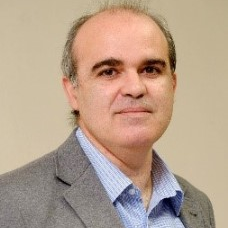Advances in Multilevel Converter/Inverter Topologies and Applications
A special issue of Energies (ISSN 1996-1073). This special issue belongs to the section "F3: Power Electronics".
Deadline for manuscript submissions: closed (31 August 2023) | Viewed by 10423
Special Issue Editors
Interests: multilevel converters; renewable energy; modulation techniques
Special Issues, Collections and Topics in MDPI journals
Interests: power electronics; multilevel converters; renewable energy
Special Issues, Collections and Topics in MDPI journals
Interests: modulation techniques; multilevel converters; model-based predictive control of power converters and drives; renewable energy sources; power devices lifetime extension
Special Issues, Collections and Topics in MDPI journals
Special Issue Information
Dear Colleagues,
Medium-voltage high-power converters have become a mature and attractive solution for a wide variety of applications. Efforts from researchers and industry are achieving a rapid development of different converter topologies, modulation techniques and control strategies. In addition, other interesting research topics such as fault tolerant operation, reduction in power losses, converter lifespan management methods, optimized control strategies and new applications are also important.
Topics of interest include, but are not limited to, the following:
- Converter topologies for high-power motor drives;
- Converters for renewable energy applications;
- Converters for grid-connected applications such as active front-end, active filter, STATCOM, FACTS, smart transformers, etc;
- Converters for high-voltage DC transmission systems;
- Rectifiers and applications in regenerative systems;
- New modulation strategies and control strategies for high-power converters;
- Common mode voltage reduction methods in high-power inverters;
- Fault tolerant capability of high-power converters;
- High efficiency high-power converters;
- Multilevel multiphase converters;
- New medium-voltage high-power converter topologies;
- Active lifespan management methods.
Prof. Dr. Jose I. Leon
Prof. Dr. Samir Kouro
Dr. Abraham Marquez Alcaide
Guest Editors
Manuscript Submission Information
Manuscripts should be submitted online at www.mdpi.com by registering and logging in to this website. Once you are registered, click here to go to the submission form. Manuscripts can be submitted until the deadline. All submissions that pass pre-check are peer-reviewed. Accepted papers will be published continuously in the journal (as soon as accepted) and will be listed together on the special issue website. Research articles, review articles as well as short communications are invited. For planned papers, a title and short abstract (about 100 words) can be sent to the Editorial Office for announcement on this website.
Submitted manuscripts should not have been published previously, nor be under consideration for publication elsewhere (except conference proceedings papers). All manuscripts are thoroughly refereed through a single-blind peer-review process. A guide for authors and other relevant information for submission of manuscripts is available on the Instructions for Authors page. Energies is an international peer-reviewed open access semimonthly journal published by MDPI.
Please visit the Instructions for Authors page before submitting a manuscript. The Article Processing Charge (APC) for publication in this open access journal is 2600 CHF (Swiss Francs). Submitted papers should be well formatted and use good English. Authors may use MDPI's English editing service prior to publication or during author revisions.
Keywords
- multilevel converters
- power electronics
- high-power applications
- medium-voltage systems
- modular converters







